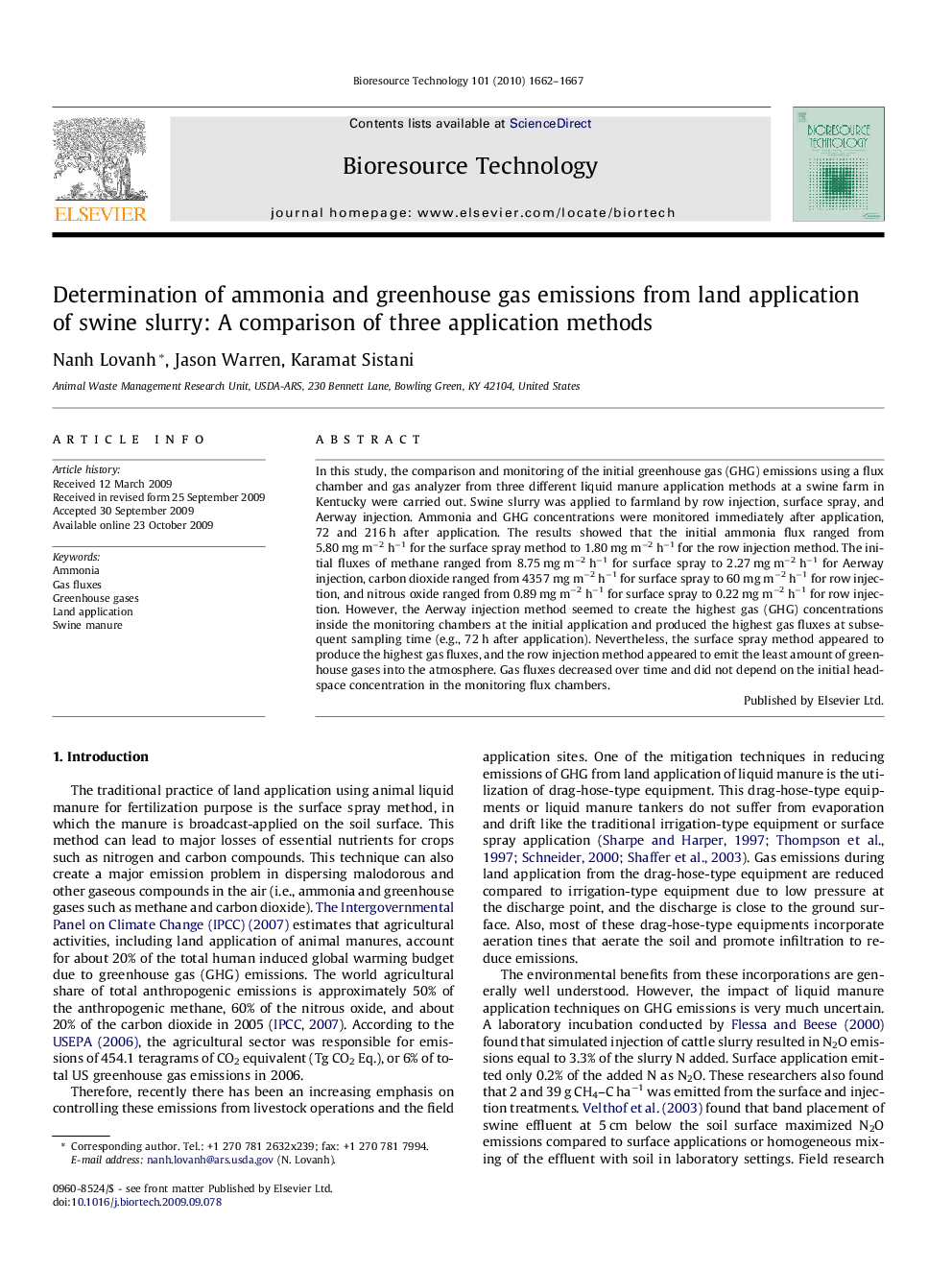| کد مقاله | کد نشریه | سال انتشار | مقاله انگلیسی | نسخه تمام متن |
|---|---|---|---|---|
| 682736 | 888990 | 2010 | 6 صفحه PDF | دانلود رایگان |

In this study, the comparison and monitoring of the initial greenhouse gas (GHG) emissions using a flux chamber and gas analyzer from three different liquid manure application methods at a swine farm in Kentucky were carried out. Swine slurry was applied to farmland by row injection, surface spray, and Aerway injection. Ammonia and GHG concentrations were monitored immediately after application, 72 and 216 h after application. The results showed that the initial ammonia flux ranged from 5.80 mg m−2 h−1 for the surface spray method to 1.80 mg m−2 h−1 for the row injection method. The initial fluxes of methane ranged from 8.75 mg m−2 h−1 for surface spray to 2.27 mg m−2 h−1 for Aerway injection, carbon dioxide ranged from 4357 mg m−2 h−1 for surface spray to 60 mg m−2 h−1 for row injection, and nitrous oxide ranged from 0.89 mg m−2 h−1 for surface spray to 0.22 mg m−2 h−1 for row injection. However, the Aerway injection method seemed to create the highest gas (GHG) concentrations inside the monitoring chambers at the initial application and produced the highest gas fluxes at subsequent sampling time (e.g., 72 h after application). Nevertheless, the surface spray method appeared to produce the highest gas fluxes, and the row injection method appeared to emit the least amount of greenhouse gases into the atmosphere. Gas fluxes decreased over time and did not depend on the initial headspace concentration in the monitoring flux chambers.
Journal: Bioresource Technology - Volume 101, Issue 6, March 2010, Pages 1662–1667